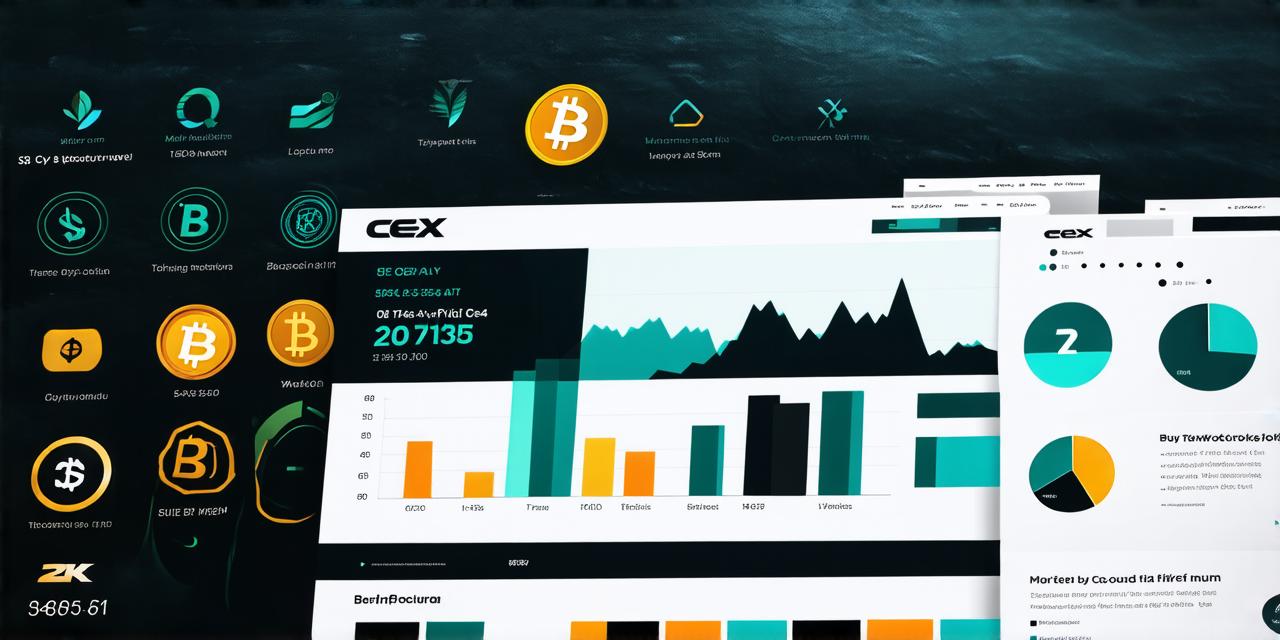What is a CEX?
A CEX, or centralized exchange, is a type of cryptocurrency exchange that operates on a centralized server. This means that all trades are processed through a single point of control, which can be both convenient and risky for users. Centralized exchanges typically charge higher fees than decentralized exchanges (DEXs) but offer more liquidity and wider selection of coins.
Pros and Cons of CEXs
CEXs have several advantages that make them popular among crypto investors. One of the biggest benefits is their high liquidity, which means users can easily buy and sell cryptocurrencies at any time. Centralized exchanges also offer a wider selection of coins than DEXs, making it easier for users to trade their favorite assets.
However, there are also some downsides to using a CEX. One of the biggest risks is that centralized exchanges are a single point of failure. If the exchange goes down or is hacked, users may lose access to their funds. Additionally, centralized exchanges can charge higher fees than DEXs, which can eat into a user’s profits over time.
Real-Life Examples of CEX Successes and Failures
One example of a successful CEX is Binance, one of the largest cryptocurrency exchanges in the world. Binance offers a wide selection of coins, competitive fees, and 24/7 trading. However, there have also been some high-profile failures in the CEX space. One notable example is Mt. Gox, which was the largest Bitcoin exchange in the world until it was hacked and lost billions of dollars worth of cryptocurrency in 2013.

Understanding the Risks and Rewards of Using a CEX
Before using a CEX, it’s important for crypto developers to understand the risks involved. Centralized exchanges are a single point of failure, which means users may lose access to their funds if the exchange goes down or is hacked. Additionally, centralized exchanges can charge higher fees than DEXs, which can eat into a user’s profits over time.
Despite these risks, there are also some benefits to using a CEX. Centralized exchanges typically offer more liquidity and wider selection of coins than DEXs, making it easier for users to trade their favorite assets. Additionally, centralized exchanges can be convenient for users who don’t have experience with decentralized technologies.
The Future of CEXs in the Crypto Ecosystem
As the cryptocurrency market continues to grow, it’s likely that centralized exchanges will remain an important part of the ecosystem. However, as users become more aware of the risks involved with using a CEX, we may see a shift towards decentralized exchanges. DEXs offer more security and privacy for users, which can make them a more attractive option in the future.
FAQs About CEXs
1. What is a centralized exchange (CEX)?
A CEX, or centralized exchange, is a type of cryptocurrency exchange that operates on a centralized server.
2. What are the pros and cons of using a CEX?
Pros include high liquidity and wider selection of coins, while cons include higher fees and the risk of a single point of failure.
3. Can I lose my funds if I use a CEX?
Yes, there is always the risk of losing funds if you use a centralized exchange, especially if the exchange goes down or is hacked.
4. What are some examples of successful CEXs and failures?
Successful CEXs include Binance, while notable failures include Mt. Gox.
5. Is it safe to use a CEX in the cryptocurrency market?
While there are risks involved with using a CEX, it can be a convenient option for users who don’t have experience with decentralized technologies. However, it’s important for users to understand the risks and take steps to protect their funds.
Summary
In conclusion, centralized exchanges (CEXs) are an important part of the cryptocurrency ecosystem.
